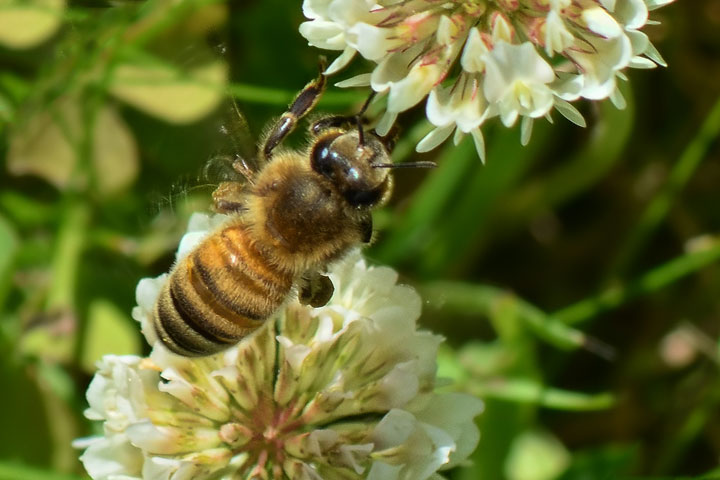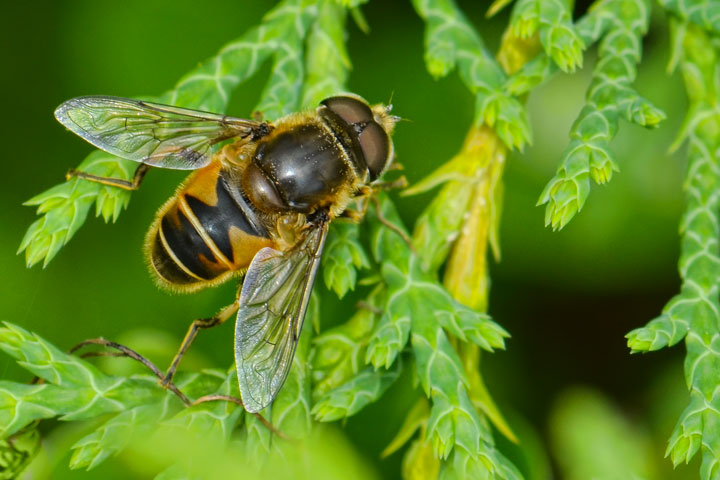The ancients believed that (adult) honey bees could be produced from dead meat. References to this are found in Hebrew and Roman literature. How could this strange belief have arisen? The answer is simple and found to this day in most summer gardens.
The honey bee has a mimic: the drone fly.
It is not uncommon for various species of flies to mimic a bee or wasp. Being the look-alike of a stinging insect confers some protection from predators such as birds. Macrophotography easily enables us to tell the flies from the bees, but, when these insects are seen moving rapidly or in the distance, the differences are apparent to neither birds nor ancients. While adult honey bees emerge from larva in a hive, adult drone flies often emerge from maggots in decaying flesh. It was the honey bee mimic the ancients would have seen emerging from dead meat, not the honey bee.
The first picture shows a honey bee (Apis mellifera) collecting pollen from clover. (Why I have honey bees in my yard is unclear. Are they feral or does a neighbour keep hives?) The bee has long antennae, small eyes, and a distinct waist between the thorax and abdomen. It also has four wings, but that is more difficult to spot.
The second picture shows the drone fly (Eristalis tenax). It has short antennae, large eyes (this one is a male, so the eyes nearly touch), and no waist between thorax and abdomen. It also has only two wings.
Each of these insects is a European import that has become well established across North America.
A honey bee forages for pollen. 
Although shown here on a cedar bough, the drone fly is a pollinator and is frequently found on flowers. The hourglass pattern on the abdomen of this fly is characteristic. It neither stings nor bites so its primary protection is that it looks like something with better defences. 
